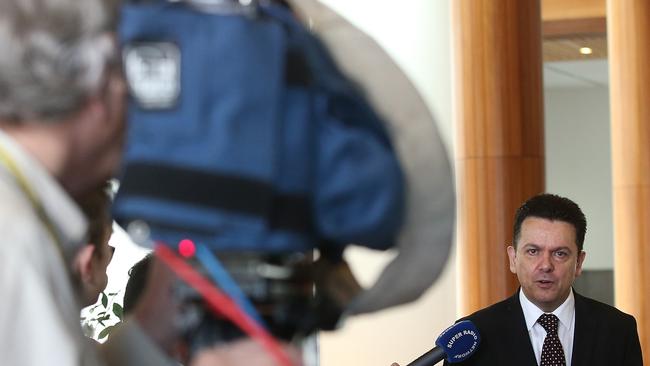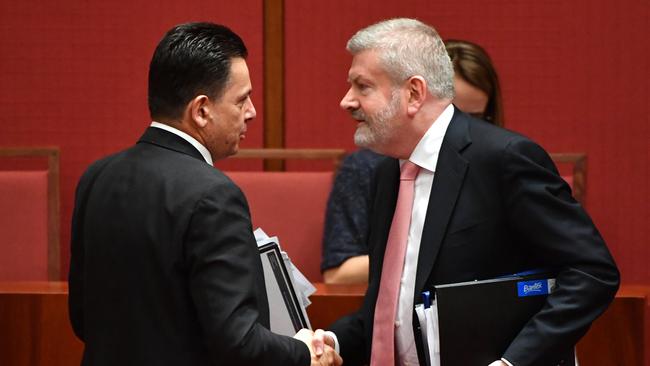Media reform: not worth not doing

The Australian Financial Review’s print readership was about 500,000. We thought we should be able to get at least half that audience to click on at least 1.5 of our stories per day. At $50 per thousand clicks that would produce revenue of about $5 million.
We set a cost base of $4.5 million (about one-20th of the AFR’s costs), arranged funding to reach break-even in a year, and away we went.
We easily achieved, and exceeded, the audience and click numbers within a year — after all it was the GFC, and Business Spectator was free while the AFR was expensive, because the then editor in chief Michael Gill was holding out fiercely against giving content away, alongside Rupert Murdoch, as it happens.
But that $50 CPM was never seen again. CPMs now range from 10c to $5, depending on the niche. In other words, online display advertising rates have fallen by between 90 and 99 per cent, and it’s clear that Gill and Murdoch were right and we were wrong.
At, say, $2 CPM and no other revenue than display ads, a newsroom of 100 journalists plus sales staff and overheads costing $20 million a year would need 30 million page views a day, 365 days a year. Totally impossible, especially in a country of 23 million people.
Why rake over these coals now? Because media reforms finally passed the Senate last week after some of the most protracted and difficult negotiations seen for any laws, which just goes to show that most politicians haven’t caught up yet.
The reforms were worth doing, or more perhaps accurately, they were not worth not doing, but they’re unlikely to make much difference to anything.
Merging two or three losers rarely produces a winner. There might be some media executives fantasising about offering advertisers a bundle of TV, radio, print and digital and getting their CPMs up, but the word “bundle” usually means discount, not premium.
And as for the “diversity” argument — that’s mainly code for “don’t let the Murdochs own more”, which is an ACCC matter if we’re talking market power, and if we’re talking influence, it’s not clear that enough people are paying enough attention any more for that to be a problem, notwithstanding the belief of politicians to the contrary.

Taken as a whole, journalism is very diverse indeed now: ABC, News Corp, Fairfax, The Guardian, New Daily, Facebook, Twitter, Nine, Seven, Ten, 2GB, 3AW, plus every media outlet everywhere in the world, now available here.
Anyone who is reading, watching or listening to one of them already agrees with its bias, if there is one, and is being reinforced, not influenced.
The problem for journalism is that the business model has collapsed, and that won’t be fixed by repealing the two out of three and 75 per cent rules.
The only two commercial models for supporting it are sponsored content (also known as native advertising) and subscriptions, and neither is working sufficiently well yet to do the job, although there is some light at the end of each tunnel.
Some sponsored content is advertising disguised as editorial, which is deceitful and ultimately damaging, but most is properly labelled.
Apart from suburbans, newspapers have always had a cover price so for them it’s a matter of re-educating customers to pay, after a decade or so of mistakenly thinking the CPMs would be high enough to allow free content. That won’t be easy, partly because there is still quite a lot of free content funded by the government (ABC and SBS) and philanthropists. Radio and TV have always been free, but TV, at least, is also now partly subscription.
It’s a mistake to blame Google and Facebook for “hoovering up” all the ad revenue. Senator Nick Xenophon said that the other day when announcing his agreement to the media reform legislation.
It’s true that those two American businesses are getting something like three-quarters of all ad revenue now, but that’s not really the problem. They are just utilities, albeit very smart ones, spending billions refining algorithms and data.
It’s really just about the sheer volume of web pages now available via Google, including source material rather than having to rely on journalists to report stuff, and by the cascading volume of words and pictures being produced by everybody on the planet, for nothing, on Facebook, Instagram and Twitter.
It’s simply a matter of demand and supply. We are water distillers caught in a rainstorm, gold miners in the land of Midas, where everything is gold.
It won’t change; we have to move up to platinum instead.
* Alan Kohler is Publisher of The Constant Investor



When we launched Business Spectator exactly 10 years ago, the CPM (cost per thousand) of the display ads we were selling was $50.